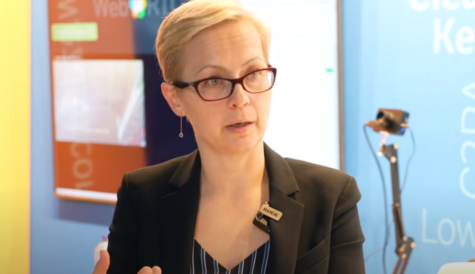
After more than 40 years of operation, DTVE is closing its doors and our website will no longer be updated daily. Thank you for all of your support.
Geolocation: Pinning down the pirates of the EU

Charlie Johnson, Vice President, UK and Ireland, Digital Element
While illicit TV viewing is nothing new, it is getting harder to manage. The methods used to circumvent digital rights management (DRM) and access restricted content have become so sophisticated that, for many broadcasters, it’s difficult to identify or track the perpetrators.
With the explosion in SVOD and OTT services providing more viewing choices than ever before, it’s not surprising that the TV industry in Western Europe is expected to surpass a whopping $23 billion by 2023. Sky — which has 23 million paying subscribers — told Variety that around 70% of their customers stream content, so for European broadcasters, the stakes are high. However, with VPN usage also on the rise – 18% of European internet users currently use a proxy server – pinning down the pirates will be no mean feat over the next five years.
A broadcasting battle
Broadcasters are constantly grappling with two main challenges: compliance and the circumvention cycle. Firstly, broadcasters are subject to strict regulations when it comes to DRM. Once content has been produced, they must ensure it’s only distributed via the appropriate channels and within approved regions if they want to maintain integrity, and avoid hefty penalties. Secondly, broadcasters need to ensure the content they produce and distribute is sufficiently engaging and of a high-enough quality that viewers are willing to spend for the service, rather than circumventing payment to gain access illegally.
But to achieve this, content creators need to generate enough revenue — through paying subscribers — to maintain those high content standards and attract even more customers. And herein lies the problem. It goes without saying that the best way to maximise revenue is making sure only paying users access content, but doing so is far from easy amid high VPN adoption. While it’s true that VPNs are a favoured tool for circumvention — studies show half of all VPN usage can be attributed to accessing restricted content – this isn’t always the case. More and more legitimate viewers are using a VPN for reasons such as increasing their online security and privacy, or simply to communicate with friends and family. And these are the very customers broadcasters depend on to promote and recommend their services.
The consequences of limiting the viewing experience of legitimate users could be far worse for a broadcaster’s reputation than allowing illicit access, so is there another solution?
Flagging the fraudsters
The good news is that the fast-developing capabilities of detection technology presents many other options to outsmart the pirates.
Broadcasters can monitor IP entry and exit nodes within proxy-level data to highlight anomalies, and determine whether or not a user was permitted to view content from a particular location. Moving beyond proxy IP, detection methods can also assess velocity and connection type. For instance, by measuring the time and distance between different connection points, they can rapidly identify dubious patterns, such as unrealistic geographical jumps.
Once suspicious activity has been recorded, broadcasters then have the ability to review the data internally, or even prohibit access in real time. And the beauty of IP geolocation technology is that it doesn’t rely on any personally identifiable information being accessed or shared – nor does it require any user opt-in, meaning broadcasters can successfully monitor user connections without infringing privacy laws or hampering the user experience for legitimate viewers.
The additional benefit of deploying geolocation technology is that once legitimate users have been identified, IP tracking can then be used to deliver more targeted advertising, which not only bolsters ad revenues (and therefore broadcaster-advertiser relations), but further enhances the viewing experience, keeping loyal subscribers coming back for more.
As strategies for combatting circumvention remain high on the agenda for the broadcasting industry, the ability to determine the difference between each type of connection will prevent any false positives (i.e. inadvertently blocking legitimate users) and allow broadcasters to foster lasting relationships with audiences across the EU. Now is the time for broadcasters to stand together to curb the trend of circumvention, pin down the pirates and protect their bottom line – without detracting from the viewing experience of paying customers.
Charlie Johnson is the vice president, UK and Ireland at Digital Element


